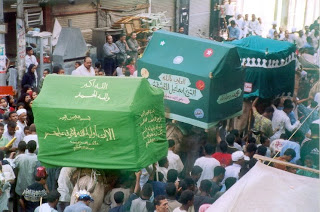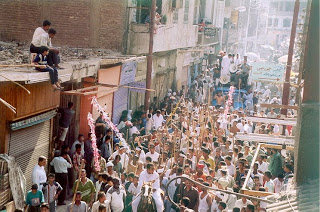Egyptian Beach Vacations

Despite Egypt's ancient allure, today the country probably attracts more beach vacationers than any other type of tourists. This is because, for many Europeans, the warm Egyptian beaches are both inexpensive and well appointed. Many European countries specifically lack warm beaches and the alternatives to Egypt are somewhat expensive. Therefore, not only do people come to Egypt's beaches independently, but many arrive by way of chartered airlines that specialize in such vacations from Europe. Depending on how one looks at it, Egypt can be said to have as many as seven beach zones. These consist of the Mediterranean beaches along the mainline coast from the Suez Canal over to Libya, the Mediterranean beaches along the northern Sinai, the Sinai coast along the gulf of Aqaba, the Sinai coast along the Gulf of Suez, the southern Sinai region which opens onto the Red Sea, the Mainland coast along the Gulf of Suez and the Mainland coast south of that along the Red Sea. Each of these areas vary either somewhat, or extensively from the others. Obviously the biggest differences are between the Mediterranean coast and all of the other regions that connect with the Red Sea. Some of these regions attract extensive tourism, while others are almost void of tourists. Some attract very specific tourists, while others are more generalized.

The North Coast from Libya East though the Sinai
In reality, the various regions are looked upon somewhat differently. For example, on the Egyptian mainland coast along the Mediterranean, there is a vast difference between the area from Alexandria over to Port Said from the region west of Alexandria. East of Alexandria is very populous along much of the Delta and not suitable for beaches until one reaches the northern Sinai. The beaches at Alexandria cater almost exclusively to Egyptians, with the exception of some specific resorts, who either have their own villas or apartments, or who stay in hotel facilities. In fact, probably most Egyptians come to Alexandria not for a beach vacation as such, but to escape the heat of Cairo.

West of Alexandria along the coast, thinning out as one proceeds further west, but extending almost to the Libyan border, are resorts that differ from the beach hotels and facilities to the east. These are frequently compounds, as opposed to real villages, some of which are very exclusive and have only recently been built. The main point is that, while indeed some foreign tourists can be found in this region, they are very few in number, other than tourists visiting Alexandria for more classical reasons. This, of course, may change over time.
The regions west of Alexandria has been called "underdeveloped". That too is rapidly changing, as new resorts are popping up all along the shoreline, particularly just west of Alexandria. One of the intriguing aspects of the Mediterranean coast beach resorts is that there is a certain amount of experimentation with various types of Beaches. For example, around Marina, one of Egypt's most exclusive northern beach resort areas, specific beaches have been set aside for women, who wish to enjoy the beach without interference from male eyes, and youth, where the atmosphere is a little more lively and geared to their pleasures.

Along the north Sinai coast there is today actually very little tourism. In fact, about the only well known tourist location is Al-Arish, which has tried to make a go of tourism but has not been too successful, even though there are some fairly nice hotels in the village.
The Gulf of Suez

What is not surprising is that the mainland beach along the Gulf of Suez is ever more popular among Egyptians, and may very well become more important to foreign tourists as well. Though perhaps not quite as warm as beaches further south, resort complexes such as Stella Di Mari, which already receives a large number of Italian tourists in particular, are very nice, relatively inexpensive, and an easy visit from Cairo. We have often praised this location, along an area known as Ain Sukhna, for its convenience to Cairo as a quick Red Sea jaunt (though it is actually on the Gulf of Suez), which also allows tourists close access to visit the Suez Canal, and fairly close access to the famous Eastern Desert Monasteries of St. Anthony and St. Paul. Though this area remains mostly a destination for Egyptians, we expect to see more and more foreign tourists in the future, for which it is well suited.

The Beach at Stella Di Mari
It is rather interesting that, along with the northern Mediterranean Sinai coast, the Sinai coast along the Gulf of Suez has not much been developed as a tourist destination, either for Egyptians or foreigners. This is not to say that no facilities exist, but they are very sparse.
The Mainland Coast Along the Red Sea

Where we begin to see the most foreign beach goers is as Egypt's mainland coast opens onto the Red Sea. Specifically, the and Hurghada region is one of the most popular beach areas in Egypt among foreign tourists. Hurghada has traditionally been known as one of the most affordable beach resort communities, though there are certainly more luxurious facilities available in the city proper, while El Gouna, just to the north, has strictly an upper class reputation. Just to the south of Hurghada is also the exclusive compound of Soma Bay, with several hotels and a fine golf course. As one travels further south along the mainland Egyptian coast, resorts areas become less dense, and many of the more southern tourist destinations are more scuba diving camps than resorts though, for example Marsa Alam is gaining in importance as a general tourist destination.
The Eastern Sinai along the Gulf of Aqaba and its Southern region in the Red Sea

The eastern shore of the Sinai along the Gulf of Aqaba has a number of beach vacation resorts and towns, from the very northern tip of the Gulf all the way down to the southern end of the the Sinai. These areas really are frequented almost entirely by foreign tourists. However, they vary considerably, from Taba, which probably receives most of its tourism from Israel, down to Sharm el-Sheikh, which like Hurghada, is one of the main tourist destinations for beach goers to Egypt. In between Taba and Sharm el-Sheikh are Nuweiba and Dahab, which seem to cater to a mix of foreign tourists looking for perhaps a little less formal resorts and for that matter, less crowded resorts.

Types of Facilities

In Egypt, one of the nice things about its beach resorts is that just about every area seems to be interestingly different, and there are a wide range from the standpoint of expense. Facilities range from very rudimentary beach camps to the finest imaginable five star hotels, and include the possibility of villa rentals. In general, in the region south of Hurghada, not including Marsa Alam, beach camps and more rudimentary accommodations seem to be more dominant, but then so too are open beaches with little in the way of crowds. On the east, Aqaba side of the Sinai, while Taba and especially Sharm el-Sheikh are built up areas with fine facilities to choose from, the area in between these two destinations tend to be more camp-like, though there are certainly a few fine hotels here and there. These areas, south of Hurghada (and south of Soma Bay, and not including Marsa Alam), tend to be very laid back areas of beach with less formal entertainment facilities than the main tourist areas of El Gouna, Hurghada, Sharm el-Sheikh, Taba and more and more, Marsa Alam. However, even the grand tourist destinations can be very different.
For example, Hurghada is almost two cities in one. There is the downtown area with its less expensive hotels, some with beach front property, and then there are the individual resorts that are really somewhat segregated from the downtown area.

The more segregated beach resorts at Hurghada are not all that different from those further north in the area of Ain Sukhna and along the Northern mainland coast west of Alexandria. They are essentially self contained complexes that offer little availability to the main city of Hurghada. Tourists tend to not stray far from the compound where they are staying. On the other hand, El Gouna, just to the north of Hurghada is set up more to allow tourists in the various resorts to roam around in the small village. Sharm el-Sheikh is probably the most open resort area, with a boardwalk that connects most of the beach front resorts and the town center, though there are a few more isolated resorts.

What this means for the most part is that the entertainment possibilities in Sharm are much more varied. It should be noted that in many more isolated compounds, such as Stella Di Mari in the north, there may be more than enough activities and entertainment for most people. Many of the individual compounds such as this have more than one hotel, and work hard to include various forms of entertainment and activities for the whole family.
Scuba Diving and other Water Activities

One of the main differences between the the coastal regions that border the Red Sea and those in the Gulfs and Mediterranean Zones is the availability of Scuba Diving. There is some sparse scuba diving facilities in just about every zone, but by far, most Scuba Diving facilities are located from El-Gouna south along the Red Sea, and around Sharm el-Sheikh on the Sinai. In fact, perhaps as much as 80% of all Scuba Diving activities originate from the immediate region of Hurghada and Sharm el-Sheikh. This is not to say that activities such as snorkeling cannot be found at almost all beach areas. Furthermore, other activities such as windsurfing and skiing, while available in many different locations, seems to be very popular along the mainland Gulf of Suez Zone. At various locations on just about all of the beaches there are other water sports available, such as sail boat rentals and parasailing

































